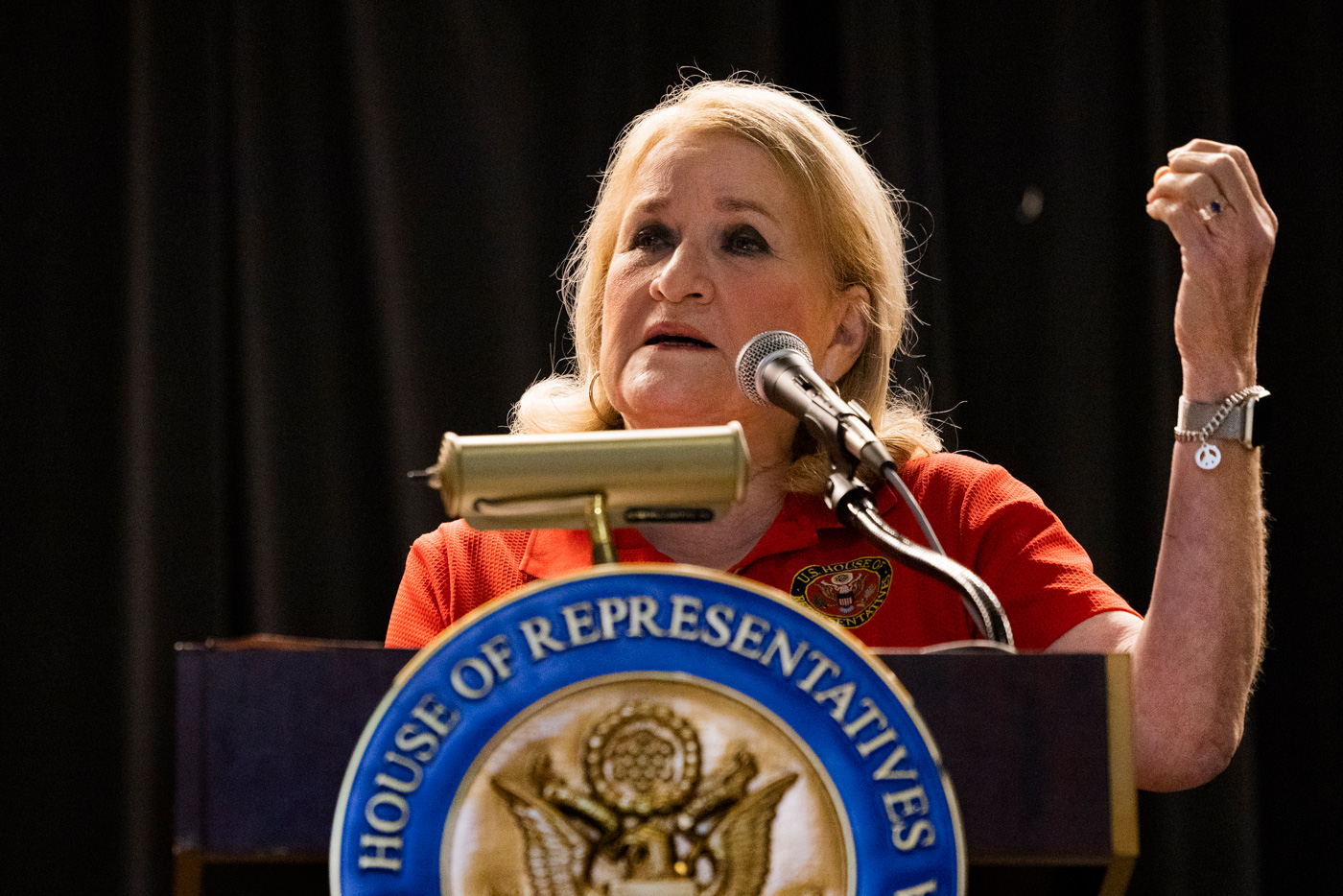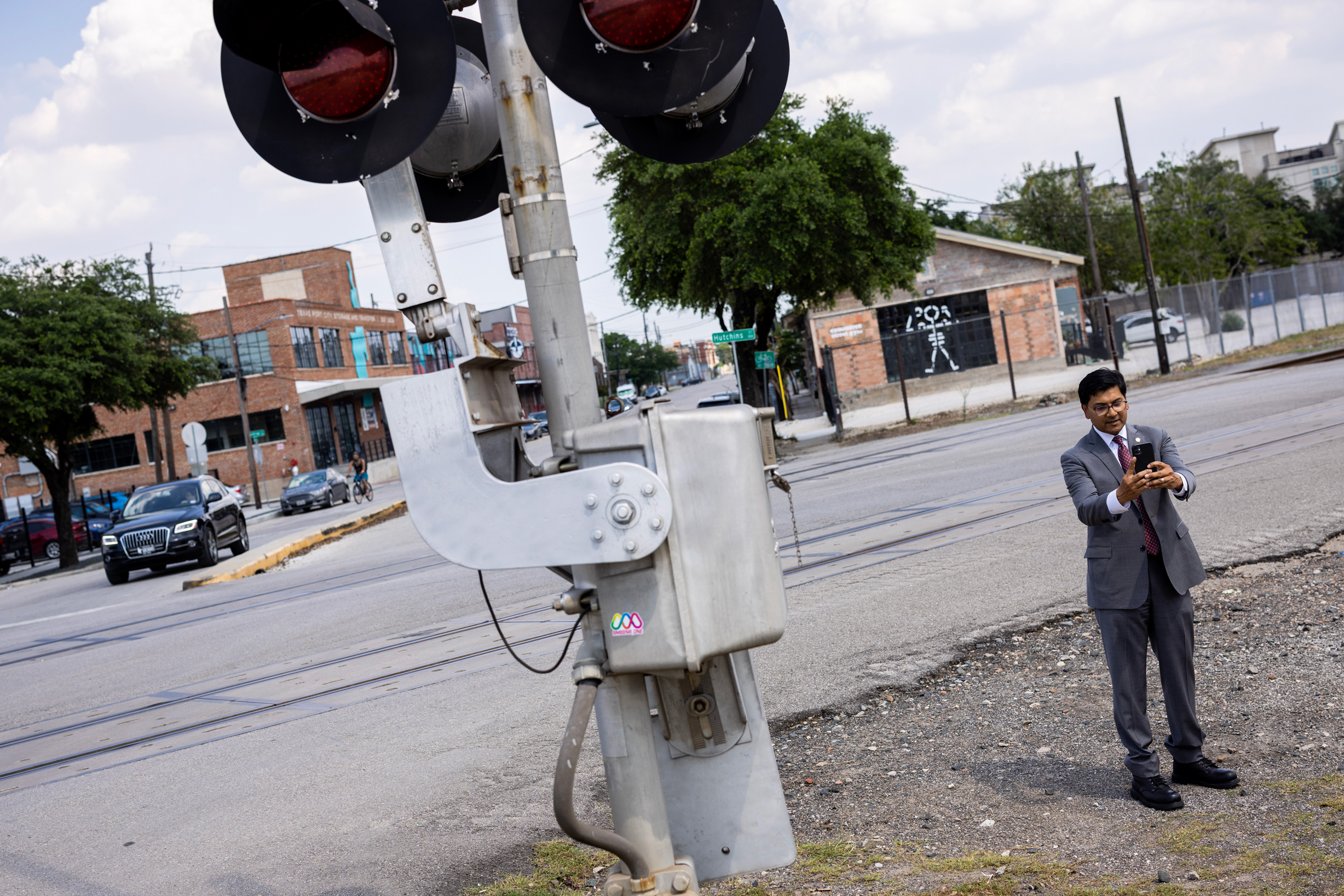|
Getting your Trinity Audio player ready...
|
I left my house four times the weekend before last; three of those times, I encountered a stopped train blocking street traffic in the East End.

The first came on Saturday, June 3, when I watched out the window of Segundo Coffee Lab as a Union Pacific train ground to a halt at Milby Street.
The following day, we encountered another UP train blocking Lockwood and Eastwood streets as I drove my family home from our Sunday morning stroll at Memorial Park. A little more than an hour later, a third stopped train jammed both Leeland and Cullen during my drive home from grocery shopping.
The first train was a momentary stop; by the time I’d finished my latte, it was chugging along again. But I have no idea how long the second and third trains remained stalled. It could have been minutes. Or hours.
Both are frequent occurrences in Houston’s East End, where residents report more stopped trains blocking traffic than any other neighborhood in the nation. And that uncertainty of how long you’ll be stuck somewhere is one of the many layers of frustration and fatigue that my neighbors and I experience.
But less than 24 hours after typing my final angry train tweet with heavy thumbs, I saw a rare beacon of hope: The Federal Railroad Administration awarded the city of Houston $36.9 million to eliminate at-grade — an industry term that means “street level” — railroad crossings. The money, along with a 20 percent match from the city, is the final bit of funding needed for a $123.6 million project that will construct four underpasses for local traffic, introducing grade separation at key pain points throughout the neighborhood.

“It’s a big win,” U.S. Rep. Sylvia Garcia, D-Houston, told me on Tuesday. “But we know it’s only the start of a lot more hard work that we need to continue to do to make sure that we address the strain and the concern that all my residents have from the stalled trains.”
In other words: It’s a nice first step. But these federal funds are not going to solve the East End’s stopped train problems.
All the funds allocated are specifically designated for improvements along the West Belt Subdivision — a stretch of rail tracks that runs northwest to southeast through the city’s east side, and includes the intersections at Leeland and Cullen. But the Galveston Subdivision — an east-west corridor that bisects much of the East End just south of Harrisburg Boulevard — will go untouched. So the intersection I saw blocked at Segundo on Saturday, or the one on Lockwood the following day, will see no relief from this work.
Garcia knows this. As does the city. And even the head of the FRA, Administrator Amit Bose, told me on Wednesday that he suspects Houston will reach out for more funding as it becomes available.
“This is just the first grant, believe it or not, in the Bipartisan Infrastructure Law that the Federal Railroad Administration has,” he said after filming a video of himself at the rail crossing at Navigation and Commerce, where an 87-year-old underpass will be reconstructed as part of the project. “This is just year one of a five-year program, so there’s years two, three, four and five.”
And Houston’s a solid contender for further funding, he said. The city is teaming up with the Gulf Coast Rail District to “work through the priority conflicts that have been identified through time, based on crashes and blockages,” Houston Public Works Director Carol Haddock told me. And yes, they have their eye on the Galveston Subdivision for that.
That’s great. All of it. Wonderful.
But it also feels like it’s treating symptoms of a problem rather than its root cause: escalating train congestion caused by increasingly long trains. In a city with more than 700 at-grade crossings, there must be a more comprehensive solution than fixing the issue four crossings at a time.
“Our trains are getting longer and longer because of the supply chain issues that we had during the pandemic. But quite frankly, a lot of those supply chain issues no longer exist,” Garcia said. “I don’t know that we need to continue to allow trains to be three blocks or four blocks long so they can block so many streets at one time.”
In truth, most trains span even farther than three or four blocks. The average length of a cargo train in the U.S. grew by 25 percent between 2008 and 2017, when it reached about 7,500 feet — or 1.4 miles. And according to the Association of American Railroads, 10 percent of trains exceeded 9,800 feet by 2021.

Garcia tells me that in addition to the D-BLOC Act she introduced into Congress earlier this year, which would enable the federal government to fine railroads for stalled trains that block traffic for more than 10 minutes, she is working on another piece of legislation that would enable Congress to limit the length of freight trains. It’ll be an uphill battle.
“That one’s going to take a lot of work because there’s been other times people have talked about it, and quite frankly people kind of poo-poo it because the railroad industry has a lot of lobbyists, and those kinds of efforts have not succeeded,” Garcia said.
But in the wake of the catastrophic train derailment in Ohio earlier this year, there seems to be genuinely bipartisan support for rail legislation. U.S. Rep. Troy Nehls, R-Richmond, who chairs the House’s subcommittee on railroads, has reached across the aisle to Garcia to determine how they can collaborate on the issue.
That’s heartening, especially in a political climate that feels increasingly fraught and fractured. And that’s why it’s so important to seize this moment.
Share your Houston stories with me. We can start on Twitter, Facebook and Instagram. Or you can email me at [email protected].





